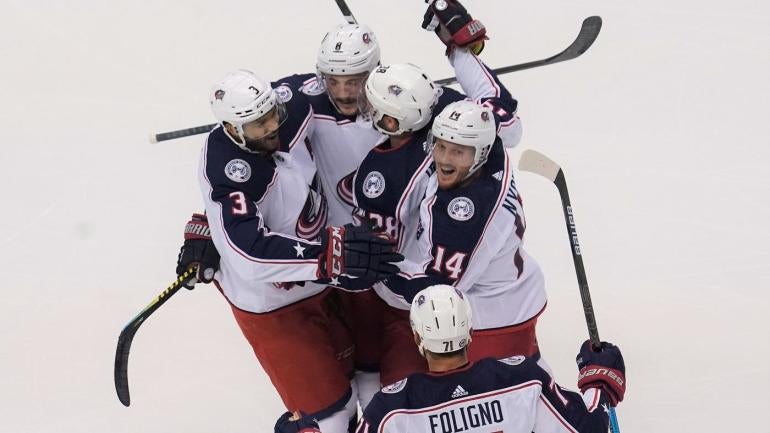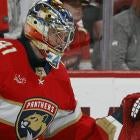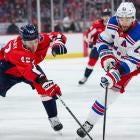
Many of professional sports leagues have returned in recent months following a halt in March due to the ongoing COVID-19 pandemic, but almost all of the returns have come without fans attending games. To combat the awkwardness -- and silence -- that comes with no fans in attendance at both of the NHL bubbles in the hub cities of Toronto and Edmonton, the league reached out to an unlikely partner for held: EA Sports.
The league has coordinated with EA Sports to have the video game company implement "atmospheric audio" that will make it sound as though there are fans in the stands during broadcasts through the Stanley Cup Playoffs. EA Sports has human operators on site in each hub city. Those operators are using a soundboard in which they can simply press a button to illicit a certain cheer when a goal is scored or a crowd roar when there's a huge save or big play.
"We've got the AI that drives all of those sounds inside of our game and we've been tuning that for the last 10 or so years," EA Sports presentation designer David Pritchett told CBS Sports. "We're able to predict a certain situation and trigger. Obviously if a goal is scored, it triggers a goal reaction. That sounds pretty obvious, but it's not as simple as that."
The EA Sports AI that exists in the company's NHL video game franchise takes into account many things when a play happens. If a goal is scored, the type of goals comes into play. Was it a sensational-looking goal? Did the goal matter in the grand scheme of the game? If a goal is scored by a team that is losing 7-2, perhaps the crowd noise might not be through the roof like it would be if it was a one-goal game with time winding down in regulation.
Despite there being a designated home and away team in each playoff game, the NHL, NBC Sports Network and EA Sports came to the conclusion that it would be easier to have a neutral site game experience. That simply means that the crowd would be 50 percent cheering for the home squad and 50 percent cheering for the away team. It also makes EA Sports' job a lot easier.
"As soon as that decision was made, it gave us some direction," Pritchett said. "It immediately cut down on the amount of samples. Not only that we have to prepare for the NHL, but also to add to the software that would be driving the system that would be operated live. It also gave us confidence that it could work with such a short timeline. It wasn't always a given that we could get this together and test it.
"It's never been done before. The idea of human operators doing what our AI does automatically live during a hockey game, we didn't know if it would even be possible."
The EA Sports operators did have a grace period where they could get used to managing the soundboard and where each button was located. The idea was that knowing where the buttons were would be "second nature" to the operators by the time playoff games rolled around and they wouldn't even have to look down at the soundboard.
"If you look at how the crowd was being used in those first few games to where it is now, they've been given much more leeway to really express the crowd throughout the game. It's been wonderful," Pritchett said. "EA Sports and NHL and the broadcasters aren't under the illusion that they're fooling anyone into thinking that there's 17,000 people in the stands. But the thing about crowd is that it's part of the storytelling. It helps let the viewers know what's going on."
Circumstances change depending on what is going on in a particular game. The majority of the crowd sounds available were used in Tuesday's five-overtime marathon between the Columbus Blue Jackets and Tampa Bay Lightning, Pritchett said. He noted that conserving noise for bigger moments is what makes running the soundboard for a game like that so difficult.
"If they had used all of the available samples that we gave them in the first game, then they'd have nowhere to go in that five-overtime game that occurred," he said. "If the peak was already achieved, then there's nowhere to go. So they need to be thinking 'I need to hold back some of this energy that I can kind of inject into this broadcast when the big moments happen.'"
With a few weeks now under their belt and multiple rounds of the NHL playoffs still to go, Pritchett believes that the product has blossomed into something great and helped improve the games for consumers.
"Over time, I think people have generally grown to appreciate the fact that it's there," Pritchett said of the crowd noise. "Fortunately, the broadcasters aren't letting it get to the point where it's intrusive. It's just there as a familiar background helping with the storytelling. It's almost the best of both worlds. We still get to hear that action on the ice in a way we've not heard it before, but we also get the crowd as well."






















